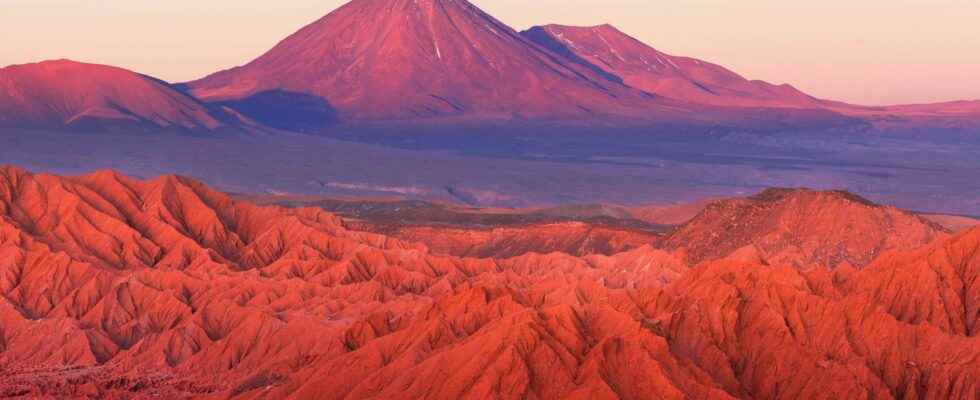A gigantic crater appeared 3 days ago in the Atacama Desert in Chile. With its 25 meters in diameter and a depth of 200 meters, it intrigues scientists. What happened ?
You will also be interested
[EN VIDÉO] In a cave with no time mark: the first days On March 14, 2021, at the initiative of the Human Adaptation research institute, a team of 15 volunteers embarked on a timeless adventure: they will remain locked up in the cave of Lombrives (Ariège) for 40 days, the one of the largest caves in Europe. All without any date or time information. At their head, Christian Clot, who recounts here the first days of the expedition. Note that the recording was recovered by the team watching outside on March 23, 2021, without having any information on the date on which it was made. © Human Adaptation Institute
He appeared three days ago near a mine of copper : a giant chasm has just been discovered in the Atacama Desert, Chile. L’huge crater measures about 25 meters in diameter, 200 meters deep. Fortunately, no damage was noted on the infrastructure or on the personnel. Everything has been secured and activity on the site has of course been suspended, but the cause of this has yet to be determined. collapse. Because if the process which is at the origin of it is known in a general way, the mining activity carried out on the spot could well be the direct cause.
SOCAVON! A socavón of approximately 25 meters in diameter is produced this sábado in the Mina Alcaparrosa, Tierra Amarilla, #AtacamaRegion. Personal of @Sernageomin se constituyó ese mismo día para evaluar la situation y levantar recomendaciones. pic.twitter.com/WfwAwcP9Oc
— Sernageomin (@Sernageomin) August 1, 2022
Everything is caused by the infiltration of water in the rock
Such craters can form when water (mainly rain) seeps into the rock. With erosion and the corrosion caused by water, carbonate rocks (like the limestone or dolomites) then dissolve little by little, creating hollows or empty spaces: this is the process of alteration. When the water then recedes, the rocky ceiling can then collapse under its own weight: a chasm forms ! The diameter of these cavities varies from a few centimeters to tens of meters in diameter, the same for the depth which can reach hundreds of meters, like what has just happened in Chile!
???????? Huge sinkhole 25 meters in diameter, appears in an area of Tierra Amarilla, Atacama, #Chile. (01.08.2022). #Sinkhole#Landslidepic.twitter.com/vwwVCE5O8x
— Jean-louis DAVID (@Jeanlou42592873) August 2, 2022
Most of the time, everything is done slowly: the chemical dissolution takes time and, little by little, the rock sags with the water level which also progresses slowly. The change of season can play a particular role, with frost or drought. But when human activity gets involved, it’s more complicated. Either the dissolution takes place more quickly, because of an accumulation of rainwater, or if the water contained in the soil is removed quickly by pumping, then it can lead to sudden appearances of chasms.
Interested in what you just read?
